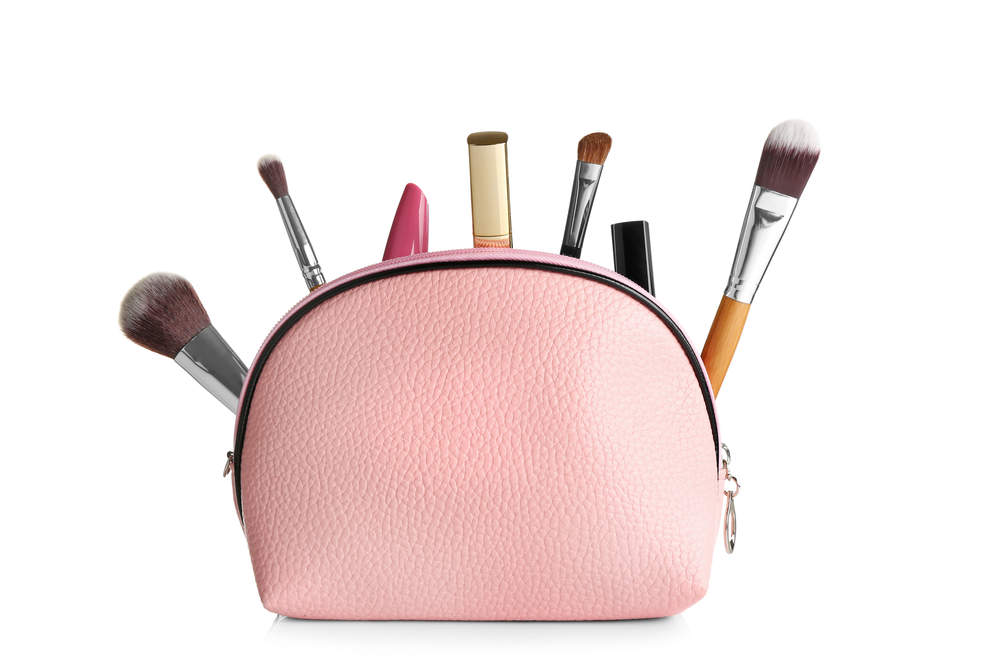Remember that jaw-dropping TikTok video where someone sliced open their beauty blender only to discover a mouldy surprise inside?
Brace yourself for an eye-opener, as Saffron Hughes, the makeup artist at FalseEyelashes.co.uk, reveals not just one, but SEVEN common hygiene mistakes people are making in their makeup routines.
But most shockingly, these mistakes could be inviting bacteria, blemishes, and more into your beauty routine.
Seven Shocking Makeup Hygiene Mistakes That encourage bacteria growth, blemishes, and more…
1. Storing your makeup in a makeup bag – which has a 90% chance of being contaminated with E. coli and more.
Contrary to popular belief, storing your makeup collection in a makeup bag is a hygiene disaster. Saffron said, “Dead skin cells and bacteria from your brushes are transferred to your makeup bag after every application. Shockingly, researchers have found that 90% of makeup bags are contaminated with superbugs, such as E.coli, due to improper cleaning.
“Instead, you should store your makeup in drawers or a dressing table for a more glamorous and germ-free routine due to the robust materials being easier to clean than a fabric makeup bag.”

2. Not closing the lids of your makeup products properly, which encourages bacteria growth.
Saffron said, “Accidentally leaving makeup product lids open is a silent invitation to bacterial growth. So, when you use a makeup product, double-check that the lid is tightly shut to prevent moist air from entering the product and creating the perfect humid conditions for bacterial growth. Wet conditions, like those found in bathrooms, should also be avoided for makeup storage for similar reasons.”
3. Never cleaning your actual makeup products – which can spread skin infections.
Saffron said, “Whilst everyone knows the importance of regularly cleaning their makeup brushes, dust, dead skin cells, and product build-up can accumulate on your beauty products themselves. The same study previously mentioned found that E.coli, fungus, and staphylococcus aureus, otherwise known as a staph infection can be found on beauty products – all of which can cause skin infections.”
4. Never cleaning where you store your makeup itself.
Saffron said, “As well as cleaning your makeup products, you should clean where you store them otherwise you’ll be placing clean products into a potentially germ-infested area.
“It’s also super easy to do! To clean your drawers, simply use a hair dryer to blow away all loose dirt and dust at the bottom. Next, apply a mild solution of soap and water and apply with a microfibre towel. Keep rubbing until the marks have been removed, before rinsing well with clean and clear water.
“Finally, dry your drawers with a towel until it’s fully dry. As previously mentioned, the moist air can enter your makeup products and produce the perfect humid conditions for bacterial growth.”
5. Not cleaning your beauty blender after every use.
Saffron said, “Just as that TikTok video shows, mould growth in beauty blenders and other makeup sponges is quite common. This happens for a number of reasons; firstly. porous structure of beauty blenders and makeup sponges allows them to absorb dirt, oils, and leftover makeup residue, creating an environment where mould is likely to grow if the beauty blender isn’t regularly or adequately cleaned.
“When mould combines with dirt and grime, it clogs pores, which can bring on an array of other skin problems, including breakouts, skin irritations, redness, and more. It’s, therefore, important to keep makeup tools clean and mould-free to avoid these skin-related risks.”
“That’s why it’s important to thoroughly clean your beauty blender using a mild soap or a special cleanser meant for blenders after each use. Gently work the soap into the sponge, then rinse it under running water to remove any makeup residue and steer clear of potential mould.”
6. Ignoring the expiration date of a makeup product – or not making a note of it.
Saffron said, “The first thing you should always do before opening any new beauty product is check the label. On the label, you will find a small jar symbol with a number followed by the letter M inside. The number followed by the letter M determines how long the product will work best and how long it should be used once opened and exposed to air.
“After this timeframe, the products will decline in quality and can become a breeding ground for bacteria. So if it’s a product that you’re less likely to finish using during the timeframe, make a note of when you opened it to avoid disappointment.”
7. Noticing a change in texture or smell of a makeup product but ignoring it.
Saffron said, “One way of determining if your product has expired is by the smell. If the product now has a new distinctive odour that it didn’t have before, then it’s time for it to go.
“Another way you can determine if your product has expired is if the texture has changed. If your liquid products have thickened or become clumpy, then they need to be disposed of. Cosmetics also begin to separate, and this becomes very visible.
“You can also tell if a product has expired by the colour of it. Cosmetics oxidize when exposed to air. The longer they are sat for, the more likely they are to oxidize. So if your makeup is looking more orange than usual, then it’s most likely expired.”